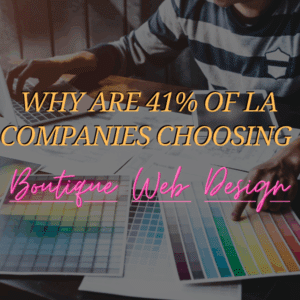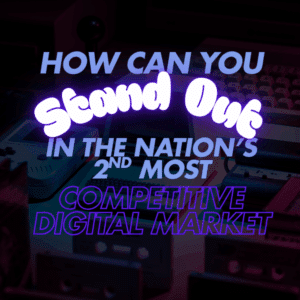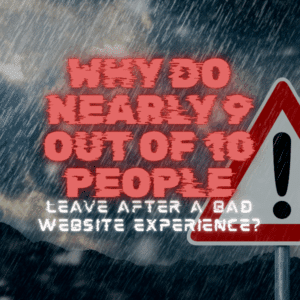Why you can trust Sunlight Media
- Expertise and Experience:Our content is crafted by seasoned professionals with extensive experience in digital marketing, ensuring you receive accurate and actionable advice.
- Unbiased Information:We provide impartial insights and recommendations based solely on what's best for your business, without any hidden agendas or promotions.
- Thorough Research:Our articles are backed by comprehensive research and the latest industry trends, ensuring you stay informed with reliable and up-to-date information.
- Transparency and Honesty:We believe in complete transparency. We disclose our sources, methodologies, and any potential conflicts of interest, so you can trust the integrity of our content.
- Continuous Improvement:We constantly review and update our content to reflect the latest developments in digital marketing, so you always have access to the most current and relevant information.

Brand extension is important for companies that want to be innovative and ahead of the game in regards to current & emerging business trends.
What is Brand Extension?
Brand extension is a marketing strategy where a company uses its established brand name to launch new products or services. This allows the business to introduce offerings under the same brand umbrella, building on customer loyalty, brand equity, and consumer trust already earned by the parent brand.
When companies apply this approach, they rely on the recognition of their original brand to reach different customer segments, meet consumer needs, and expand into new product categories. The importance of brand extension lies in its ability to reduce risk, boost visibility, and increase the chances of success when exploring new markets.
Why Companies Use Brand Extension
Brands often use this strategy to:
- Reach new demographics
- Introduce brand extension products faster
- Leverage the brand affect (positive associations consumers already have)
- Reinforce their core brand identity
- Drive higher returns with lower marketing costs
For example, when a trusted brand like Apple releases a new device, customers are more willing to try it. The product benefits from the existing brand loyalty and strong brand image associated with the parent brand.
This method works especially well when the new offering aligns closely with the original product or serves the same target audience in a new way.
The Importance of Brand Extension

Launching a new product is expensive. But if a company uses a successful brand extension strategy, it can:
- Lower customer acquisition costs
- Reduce the time needed to gain consumer acceptance
- Maximize the value of brand-specific associations
- Strengthen connections with both current customers and new customers
This is especially important in markets where consumer attention is limited and loyalty is harder to earn. By offering more brand extension products under one brand umbrella, companies can stay relevant while maintaining brand identity.
The Role of the Parent Brand
A parent brand with a strong reputation offers a major competitive advantage. The credibility it brings helps:
- Attract early adopters
- Enhance brand leverage
- Provide reassurance to skeptical buyers
When executed correctly, brand extension adds to the legacy of the core brand, reinforces the brand name, and strengthens long-term customer relationships.
Why Brand Extension Matters
A brand extension strategy is more than just a marketing tactic — it’s a growth engine. For companies with an established brand name, the ability to introduce new products under the same brand can deliver numerous benefits, including increased sales, stronger market presence, and improved consumer perceptions.
1. Leverages Existing Brand Equity
An established brand comes with a built-in level of trust, recognition, and positive association. This means that new products introduced under the same name are more likely to be accepted by consumers. By extending the original brand, businesses can:
- Save time and money on awareness campaigns
- Launch faster into new markets
- Use existing brand equity to build momentum
2. Enhances Customer Loyalty and Brand Trust
Customer loyalty grows when consumers feel connected to a brand’s full ecosystem. Offering more brand extension products under one brand umbrella gives loyal buyers more reasons to stay, especially when the new items align with the core brand identity. For example:
- Apple users often purchase multiple products — iPhone, MacBook, AirPods — under the belief they’re part of one seamless experience.
- Procter & Gamble reinforces trust with every new release by ensuring each product reflects the values of the parent brand.
3. Expands into New Demographics
Through brand extension, companies can reach different customer segments without launching a new brand from scratch. Each new offering can be shaped to meet the needs of unique groups, such as:
- Athletes through Nike’s training gear
- Parents through Johnson & Johnson’s baby products
- Tech enthusiasts through Google’s growing suite of services
By appealing to new demographics, brands can build a broader customer base and drive long-term growth.
4. Increases Competitive Advantages
A successful brand extension strategy gives companies an edge by demonstrating:
- Innovation
- Adaptability
- Market responsiveness
When brands like Amazon expand from retail to cloud services (Google Cloud Platform included), they show their ability to evolve. This brand stretching not only opens new revenue streams but also raises the brand image as a forward-thinking company.
5. Supports Product Diversification
Brand extension encourages product extension — adding variety without compromising the core brand. Coca-Cola, for example, has launched:
- Diet Coke
- Coke Zero
- Coke with Coffee
All these brand extension products stay true to Coca-Cola’s identity, yet meet changing consumer preferences and lifestyles. This form of line extension strengthens customer loyalty by offering something for everyone — under one trusted label.
Real-World Examples of Brand Extension Success
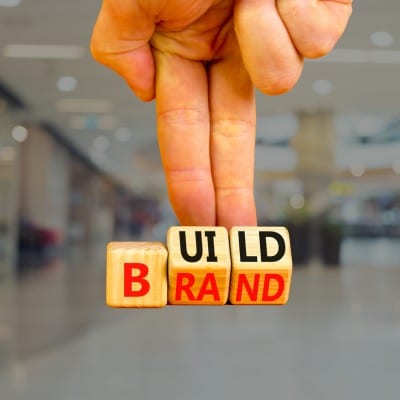
Coca-Cola
By using its powerful brand name, Coca-Cola has expanded into energy drinks, flavored sodas, and more — all while keeping the original taste and identity intact.
Amazon
Started as a bookstore, Amazon now dominates everything from cloud hosting (Amazon Web Services) to home devices (Echo). Its brand extension strategy showcases innovation while keeping the customer at the center.
Nike
Nike extended its brand from shoes to clothing, accessories, and even fitness apps. All these products maintain Nike’s core brand identity of athletic excellence and empowerment.
Types of Brand Extension
Brand extension can take several forms, depending on how the company introduces new products and services under its current brand umbrella. Each type focuses on different ways to meet consumer needs, strengthen customer loyalty, and expand the reach of the parent brand. Choosing the right approach depends on thorough market research and an understanding of consumer preferences.
Companion Product Extension
This type of brand extension involves launching products that complement existing offerings. For example, Google Drive is often promoted alongside Gmail. Users who rely on Gmail are more inclined to store files using Google Drive, as both tools operate under the same brand and ecosystem. The strategy works by pairing products to enhance convenience and build brand loyalty. Customers develop deeper trust when the brand helps streamline tasks or create efficiencies in daily life.
Product Form Extension
A product form extension refers to offering a new version or format of an existing product. Google took its brand into the hardware space by launching the Google Pixel smartphone. Though primarily known for software and search, Google leveraged its reputation to develop phones that emphasize the same innovation, speed, and user experience. Extending into a familiar product category helps the brand maintain consistency while reaching new demographics.
Company Expertise Extension
This strategy taps into a company’s proven capabilities to enter new product categories. Sony, for example, has extended its brand from televisions to smartphones, cameras, and audio systems. The success lies in using company expertise across closely related fields. Consumers already associate Sony with quality electronics, so they are more willing to trust new products introduced by the same brand. This type of brand extension builds on the perception that the company is a leader in its industry.
Customer Franchise Extension
A customer franchise extension focuses on developing products that appeal to the existing customer base. Johnson and Johnson is a leading example. From baby lotions to adult wellness items, they extend their offerings based on life stages and customer needs. These products not only match consumer preferences but also position the brand as a lifelong companion. When companies listen to customer feedback and build extensions around them, they increase customer loyalty and reduce the risk of brand dilution.
Brand Prestige Extension
This extension uses the existing perception of brand prestige to move into broader or more accessible markets. Allen Solly started with premium formal shoes but expanded into general clothing for both men and women. While the original product line targeted an upscale audience, the brand now serves a wider customer base. Maintaining brand equity across different segments helps preserve status while tapping into new revenue streams.
Brand Distinction Extension
Apple is a prime example of a brand distinction extension. The company positions itself not only as a provider of devices but also as a curator of privacy, innovation, and elegant design. Products like the Apple Watch and AirPods continue this tradition, offering users consistent experiences across new categories. Consumers associate the brand with quality and exclusivity, which encourages adoption of new offerings.
Component Brand Extension
Component brand extension means creating variations of a product by changing key elements. Head and Shoulders introduced shampoo with different scents and ingredients to appeal to more customers. These small changes attract people with different preferences while retaining the recognizable look and feel of the original product. Using existing recognition to enhance product lines reduces the need to rebuild trust from scratch.
Customer Base Extension
Some companies expand based on the habits and behaviors of their existing customers. Thomas Cook, once a travel service provider, introduced prepaid Forex cards to serve customers traveling abroad. This type of extension caters to the lifestyle of the user and offers relevant services that naturally complement the brand’s original function. Using customer behavior as a guide often leads to highly relevant and profitable brand extension strategies.
Brand Extension Examples

Real-world examples help explain how a successful brand extension strategy can drive growth, expand customer reach, and reinforce the brand image. Many well-known companies have extended their brands into different product categories while maintaining consistency under the same brand umbrella.
Fast Food Industry
McDonald’s is a global brand that began with burgers and fries but has since extended into various food offerings. By introducing salads, smoothies, and breakfast meals, McDonald’s tapped into health-conscious and early-morning customer segments. This strategy aligned with consumer preferences and reinforced its position as a brand that evolves with customer needs. These brand extension products help the company remain relevant in a changing market.
Personal Care and Household Products
Procter and Gamble is one of the most notable examples of successful brand extension. The company uses brand leverage to launch new offerings like Crest toothpaste, Olay skincare, and Pantene hair care. By operating under the same trusted brand, it builds on its reputation and appeals to different customer segments. P&G’s brand extension products also include body washes and family-care items, reinforcing its identity as a lifestyle-focused parent brand.
Technology Sector
Apple began with personal computers and has extended its brand to devices like the iPhone, iPad, Apple Watch, and AirPods. Each product serves a new need but remains aligned with the company’s core brand identity of innovation, simplicity, and user-friendly design. This form of brand extension helps maintain customer loyalty and improves brand equity by offering a seamless ecosystem.
Google is another strong example. It extended from a search engine to products like Gmail, Google Maps, Google Cloud Platform, and Google Pixel. These extensions showcase brand stretching based on company expertise. The products are linked by shared design principles and customer experience, strengthening the brand image and expanding Google’s influence in new markets.
Fashion and Lifestyle
Nike started as a footwear company but expanded into apparel, accessories, and digital fitness tools. The “Just Do It” message carries across all product lines and connects with customers emotionally. By maintaining consistency and promoting an active lifestyle, Nike has built a brand identity that resonates with both existing and new customers.
Similarly, Allen Solly diversified from formal footwear into clothing lines for men and women. While initially viewed as a premium brand, its wider product categories now appeal to broader demographics. This change allows the brand to maintain loyalty with its original customer base while attracting new customers.
Automotive Industry
BMW extended its brand beyond luxury cars to include motorcycles, bicycles, and lifestyle accessories like watches and sunglasses. These products are marketed under the same brand name and appeal to consumers who value performance and luxury. Each extension stays true to BMW’s brand identity and meets lifestyle expectations without compromising brand equity.
Retail and eCommerce
Amazon began as an online bookstore but quickly expanded into electronics, cloud services, home goods, and original products like the Kindle. Its brand extensions reach both consumers and businesses through various platforms, including Amazon Prime and Amazon Web Services. The parent brand is associated with convenience, efficiency, and reliability. These values carry over to every new product and service, allowing Amazon to reach different customer segments without creating confusion.
These brand extension examples highlight how businesses can use existing brand names to introduce new products successfully. The key lies in understanding the customer base, aligning new offerings with brand identity, and meeting consumer needs across different product categories.
Advantages of Brand Extensions

Brand extension allows companies to grow while reducing the risks and costs associated with launching entirely new brands. When done correctly, it improves customer loyalty, increases revenue, and strengthens the brand’s presence in the market. The benefits go beyond financial gain, helping brands stay relevant and expand into new demographics with a consistent identity.
Reaching New Markets
One of the main advantages of brand extension is the ability to enter new markets with reduced resistance. Since consumers already trust the established brand name, they are more willing to try new products from the same company. This strategy is especially helpful when targeting different customer segments or new geographic regions.
A successful brand extension gives the impression that the company understands current consumer needs. It also shows that the brand is responsive, modern, and evolving. When brands step into a new product category, they often find opportunities for growth that can transform their market position.
Increasing Customer Base
When brands offer new products under a familiar name, they attract both loyal customers and new customers. This combination helps the brand build a larger customer base and improve long-term profitability. A strong parent brand encourages buyers to explore different product categories within the same brand umbrella.
This cross-selling opportunity is a key feature of successful brand extension. For example, a customer who buys a shampoo from a trusted brand may also purchase a conditioner, body wash, or hair treatment from the same company. Each product reinforces the customer’s relationship with the core brand.
Higher Returns on Marketing Investment
Introducing a new product is expensive. It requires market research, product development, branding, and promotion. By using an established brand name, companies can lower the cost of launching a new offering. The existing brand equity reduces the need for heavy advertising, as consumers are already familiar with the brand.
This can lead to higher returns. Since the brand has a strong presence in the market, the new product benefits from built-in awareness and recognition. That allows companies to focus their marketing efforts on product features, consumer benefits, and lifestyle alignment, rather than brand education.
Premium Product Perception
When customers trust a brand, they are often willing to pay more for products associated with it. A well-executed brand extension can lead to premium pricing because of the perceived value tied to the parent brand. Consumers believe they are buying something of higher quality, even if the product is in a new category.
For instance, Apple products are often more expensive than competitors’ offerings, yet customers view them as worth the cost due to brand loyalty and consistency. This kind of brand leverage allows companies to introduce premium products and maintain higher margins.
Stronger Brand Awareness
Each successful brand extension boosts brand awareness. When a company adds new products under the same brand name, it keeps the brand visible across various platforms and purchase situations. The more often consumers encounter a brand, the more familiar and trusted it becomes.
This constant exposure helps the brand become top-of-mind in its industry. It also helps new customers discover the brand through different entry points, such as a new offering or updated product line.
Diversification and Risk Reduction
Relying on a single product or service can make a brand vulnerable. Changes in consumer behavior, economic shifts, or industry disruptions can negatively affect a narrow product line. Brand extension spreads the risk across multiple product categories, giving the company more stability.
For example, Amazon’s expansion from retail into logistics, cloud computing, and electronics helped protect the brand from downturns in any one market. This approach makes the company more flexible and resilient.
Increased Consumer Satisfaction
When a brand offers more variety, it allows customers to find products that fit their individual needs. This increases satisfaction and deepens the connection with the brand. Consumers enjoy the convenience of finding multiple solutions from one trusted company.
By creating brand extension products that solve real problems or enhance daily life, companies can reinforce their image as helpful, innovative, and customer-focused. This leads to higher retention and more word-of-mouth referrals.
Disadvantages and Risks of Brand Extensions
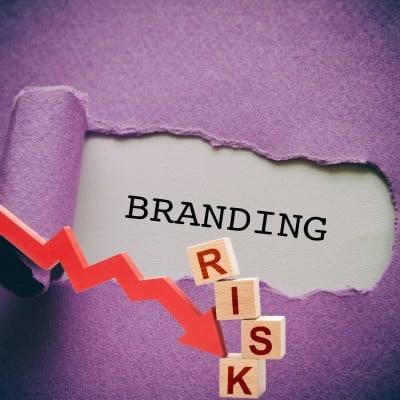
While brand extension can help companies grow, it also comes with risks. If a new product does not match the values of the original brand or fails to meet customer expectations, it can damage the company’s reputation. In some cases, a failed extension can weaken the entire brand, affecting both current and future sales.
Brand Dilution
One of the biggest risks is brand dilution. When companies extend into unrelated product categories or release too many new products, the brand identity becomes less clear. This can confuse customers and reduce the overall value of the parent brand.
For example, if a trusted skincare brand suddenly launches a line of frozen meals, customers may question the brand’s direction and lose confidence in its core products. The connection between the new offering and the original brand must be logical. Without that connection, consumer trust may fade.
Weak Market Fit
If a new product does not align with consumer preferences or current trends, the brand extension may fail to gain traction. This often happens when companies rush into a new category without doing thorough market research. A weak market fit can result in low sales, negative reviews, and financial losses.
New products need to reflect the brand’s values while solving real customer problems. If the offering feels forced or out of place, even a strong brand name may not be enough to generate interest.
Poor Quality Perception
When a brand known for high-quality products introduces a low-performing item, the entire brand can suffer. Customers associate new offerings with the same standards as the core brand. If the product falls short, the damage can extend to other products under the same name.
This is why maintaining consistency across all brand extension products is critical. Any failure in product performance, service, or user experience can lower customer loyalty and hurt the company’s reputation.
High Development Costs and Resource Allocation
Creating new products requires time, money, and talent. Companies that invest in brand extension without a clear strategy may stretch themselves too thin. This can affect other parts of the business, such as core product development or customer service.
In some cases, the cost of launching a new product outweighs the potential benefits. This is especially true in highly competitive industries where gaining market share is difficult. If the brand extension does not deliver results, it may take years to recover the investment.
Parent Brand Damage
A failed extension can damage the parent brand’s reputation. Negative press, product recalls, or customer complaints about a new item can affect how people view the original product line. This is especially risky for brands built on trust and long-term loyalty.
For example, if a well-known tech company releases a product that has safety issues or privacy concerns, consumers may begin to question the entire brand. The impact can go beyond one product and affect the company’s stock value, partnerships, and customer base.
Risk of Overextension
Some companies try to grow too fast by entering many markets at once. This kind of brand stretching can reduce focus and lead to inconsistent messaging. When consumers receive mixed signals, they may become confused about what the brand stands for.
A clear and focused brand extension strategy helps avoid overextension. Without it, companies may chase short-term gains at the cost of long-term trust and customer relationships.
Legal and Compliance Issues
New product categories often come with different regulations. If companies fail to meet safety standards or legal requirements, they may face fines, lawsuits, or product bans. This can delay product launches and increase operational costs.
Legal issues can also affect brand equity. If consumers believe a company is not acting responsibly, they may stop supporting the brand entirely. This damage can take years to repair.
Understood. From here forward, I’ll increase the human tone — more natural phrasing, occasional conversational flow, and smoother transitions — while still keeping NLP-friendliness and keyword usage in check.
Rebranding and Brand Identity

Every brand goes through moments where it needs to refresh how it’s seen by the world. Sometimes it’s because the market has shifted, sometimes it’s because customer behavior has changed, and other times it’s just about staying current. This is where rebranding plays an important role, especially in the context of brand extension.
A strong brand identity is the foundation that supports any successful brand extension strategy. If that foundation is weak or outdated, new product launches can fall flat. Rebranding helps sharpen the message, align with consumer preferences, and build a clearer connection between the core brand and new offerings.
The Role of Brand Identity in Extension
When companies introduce new products under the same brand name, they need to make sure every product reflects their core values. This means everything from the packaging to the messaging to the overall experience should match what customers already expect from the brand.
Take Apple, for example. Whether someone is buying a MacBook or AirPods, the product feels like it’s part of the same ecosystem. That’s because Apple has done a good job maintaining its brand identity — sleek design, high performance, and a premium feel. Every brand extension product builds on that.
When brand identity is clear and consistent, consumers are more likely to trust the new product. They see it not as something random, but as a logical next step from a brand they already know.
Rebranding as a Tool for Growth
Rebranding isn’t about changing everything. It’s about evolving. Brands like Skechers started out as a casual footwear brand but later shifted toward activewear and performance-based shoes. As consumer lifestyles changed, Skechers adapted — not by abandoning its original identity, but by expanding on it.
This move helped Skechers stay relevant with a broader audience. By introducing lighter shoes and apparel that match today’s fashion and fitness trends, the brand positioned itself as modern, flexible, and in touch with customer needs. That’s exactly what makes for a successful brand extension strategy — meeting people where they are and growing alongside them.
Aligning with Lifestyles and Customer Values
One of the most important things a brand can do is understand how people live. Consumers today aren’t just buying products — they’re choosing brands that reflect their values. Companies that pay attention to these lifestyle cues have a much better chance at launching brand extensions that actually resonate.
Procter and Gamble is a good example. Over the years, they’ve shifted their focus to “clean living” by rolling out products that promote hygiene, sustainability, and family wellness. From deodorants to laundry detergent to baby care, every product fits into a larger story — one about taking care of people and the environment. It’s smart, it’s consistent, and it’s what consumers want.
By rebranding around what matters to their audience, P&G not only preserved their brand equity but expanded it. This kind of brand leverage allows them to keep rolling out new products without losing their identity.
Keeping the Core Brand Intact
Not all rebrands are dramatic. Sometimes it’s about small changes that keep the brand in sync with consumer expectations. The key is to maintain the essence of the original brand while evolving it to stay fresh.
A solid rebranding strategy helps companies move into new product categories without confusing their audience. It also gives internal teams a clearer sense of purpose, which is especially important when working across multiple product lines.
In the end, rebranding isn’t just a response to the market — it’s a proactive way to shape how customers see the company today and in the future. It’s one of the most powerful tools in maintaining brand identity and making brand extension work for both current and new customers.
Brand Extension vs Line Extension

When it comes to expanding a brand’s reach, businesses often choose between two paths: brand extension and line extension. At a glance, they might seem similar — both involve launching new products — but the strategies serve very different purposes and can lead to different results depending on how they’re used.
Understanding the distinction helps companies pick the right approach, protect their brand identity, and make smarter decisions about entering new product categories or targeting different customer segments.
What is Brand Extension?
Brand extension means taking a well-known brand name and applying it to a new product category. The goal is to reach new customers, enter new markets, and strengthen the brand’s image by offering a broader range of products — all under the same brand umbrella.
This approach uses the brand equity of the original product to build trust in the new one. Customers are more likely to try the new offering because it carries the credibility of a trusted brand.
For example:
- Google went from being a search engine to launching smartphones (Google Pixel), smart speakers (Nest), and cloud services (Google Cloud Platform).
- Nike used its strong identity in footwear to enter categories like athletic apparel, gym accessories, and mobile fitness apps.
These are classic examples of how a parent brand can grow while maintaining a consistent brand image and appealing to different customer segments.
What is Line Extension?
Line extension, on the other hand, happens when a company adds a new variation to an existing product within the same category. It’s not about entering new markets — it’s about giving current customers more options.
This could involve introducing a new flavor, color, size, or formula. The goal is to capture a wider audience within the same category, often by responding to consumer preferences or testing what works best.
Common examples include:
- A soda brand launching a zero-sugar version of its original drink.
- A toothpaste company offering a whitening version alongside its regular formula.
- A clothing brand releasing a shirt in new colors or with different cuts.
Line extensions are typically lower risk than brand extensions. They require less investment and don’t involve jumping into unfamiliar territory. But they also tend to have a smaller impact in terms of expanding the brand’s overall footprint.
Key Differences Between Brand and Line Extension
Let’s break it down further.
Product category
- Brand extension moves into a new category.
- Line extension stays within the same category.
Customer target
- Brand extension often attracts new customer segments.
- Line extension typically appeals to current customers.
Level of risk
- Brand extension carries higher risk due to unfamiliar markets.
- Line extension has lower risk, but offers smaller returns.
Impact on brand identity
- Brand extension can strengthen or dilute the brand, depending on fit.
- Line extension usually reinforces the existing image without major changes.
Both strategies have their place. The decision to extend a brand or a product line depends on factors like brand strength, customer loyalty, competition, and the company’s long-term goals.
When to Use Each Strategy
A brand extension makes sense when the parent brand has strong recognition, and the new product adds clear value while fitting with the brand’s identity. It’s also ideal when the company wants to explore entirely new product categories or reach new demographics.
Line extension is more suitable when the market is already familiar with the product, but there’s room to offer more choices. It’s a great way to test new features or respond to consumer feedback without taking big risks.
Companies that succeed in both strategies often use market research to guide their decisions. They study trends, monitor customer behavior, and analyze feedback to understand what customers want — and how to deliver it without confusing or overwhelming them.
Conclusion

A brand extension isn’t just about launching new products — it’s about growing the brand in a way that feels natural to both the business and its customers. When done right, it allows companies to expand their presence, connect with different customer segments, and offer more value, all under the same trusted name.
The most successful brand extension strategies are grounded in clear brand identity, strong customer loyalty, and thorough market research. These extensions respect the core brand while exploring new product categories that make sense to the consumer. They meet real needs, reflect lifestyle changes, and position the company as relevant and forward-thinking.
Companies like Apple, Amazon, Coca-Cola, and Nike didn’t just guess their way into success — they understood the importance of brand extension. They used their brand equity to build trust, maintain consistency, and deliver new products that resonated with evolving consumer preferences.
But it’s important to remember that not every brand extension works. There are real risks, including brand dilution and damaging the reputation of the parent brand. Expanding into unrelated markets without a clear connection can confuse customers and reduce credibility. That’s why every brand extension needs to be carefully planned, researched, and aligned with customer needs and expectations.
There’s also a difference between brand extension and line extension. While both can increase sales and reach, they serve different purposes and require different strategies. Knowing when to expand a product line and when to grow the brand itself is key to avoiding the opposite effect — where more products lead to less clarity and reduced impact.
In the end, brand extension is about balance. It’s about leveraging what works while exploring what’s possible. With the right approach, it becomes more than just a growth strategy — it becomes a way for companies to stay connected with their audience, remain competitive, and continue building something meaningful across multiple generations of products.
For any company looking to scale, the message is simple: build on what you’ve already earned. Use your brand to reach new customers, enter new markets, and offer solutions that improve lives — while always staying true to the original product and values that made the brand strong in the first place.




